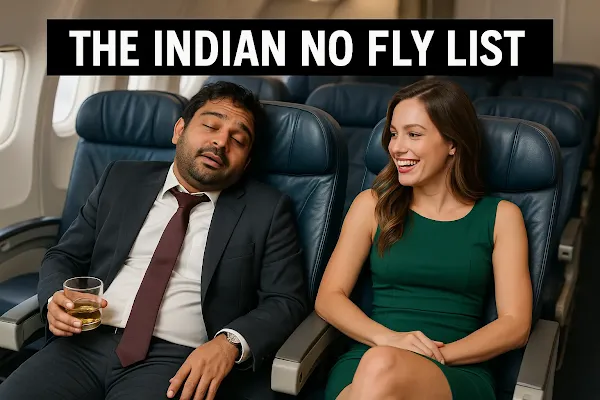A few years ago, during a family trip to Delhi, I witnessed a heated argument on a flight where a passenger's disruptive behavior led to a tense situation. The crew handled it professionally, but it made me wonder: what happens to such passengers? That experience led me to dig into the Indian No Fly List, a system designed to keep flights safe but one that raises questions about fairness and transparency. In this article, we’ll explore what the No Fly List is, how it works, and whether you might unknowingly be on it.
Table of Contents
What Is the Indian No Fly List?
The Indian No Fly List, officially called the National No Fly List, is a government initiative managed by the Directorate General of Civil Aviation (DGCA). Its primary goal is to ensure flight safety by temporarily banning passengers who exhibit disruptive behavior on aircraft. From verbal harassment to life-threatening actions, the list targets those who jeopardize the safety and comfort of others onboard.
Who Gets Banned and Why?
The No Fly List applies to passengers who engage in unruly behavior. This includes physical gestures, verbal harassment, unruly inebriation, physically abusive actions like pushing or slapping, or even life-threatening behavior such as attempting to breach the flight crew compartment. The DGCA aims to deter such actions to maintain a safe flying environment.
Levels of Offenses and Bans
The DGCA categorizes disruptive behavior into three levels, each with corresponding ban durations:
- Level 1: Unruly behavior like verbal harassment or physical gestures. Ban duration: Up to 3 months.
- Level 2: Physically abusive behavior, such as pushing, kicking, or slapping. Ban duration: Up to 6 months.
- Level 3: Life-threatening behavior, like damaging aircraft systems or physical violence (e.g., choking). Ban duration: Minimum 2 years, with no upper limit.
How Is the List Enforced?
Airlines investigate incidents of unruly behavior and impose initial bans. The DGCA reviews these decisions and may add passengers to the National No Fly List. If you’re banned, you can appeal to the Ministry of Civil Aviation. If unresolved, you can escalate the matter to the courts for further review.
Can You Still Fly Internationally?
The No Fly List primarily affects travel on Indian carriers. If you’re banned, you may still be able to fly internationally on foreign airlines, as the list’s jurisdiction is limited to Indian operators. However, international carriers may have their own restrictions or share information with Indian authorities.
Dealing with False Positives
In some cases, passengers with names similar to those on the No Fly List may face issues boarding. These “false positives” can usually be resolved by providing identification, such as a middle name or date of birth, to confirm you’re not the banned individual.
Frequently Asked Questions
Is there a No Fly List in India?
Yes, India has a National No Fly List managed by the DGCA to ban disruptive passengers from flying on Indian carriers, ensuring flight safety.
How do I know if I'm on a No Fly List?
There’s no public database to check the No Fly List. If you’re banned, the airline or DGCA will notify you. You may also face issues during booking or check-in, which can be clarified with identification.
Can I appeal a ban from the No Fly List?
Yes, you can appeal to the Ministry of Civil Aviation. If unresolved, you can take the matter to court for further review.
Does the No Fly List affect international flights?
The ban primarily applies to Indian carriers. You may still fly on foreign airlines, but they could have their own restrictions or share data with Indian authorities.






No comments:
Post a Comment